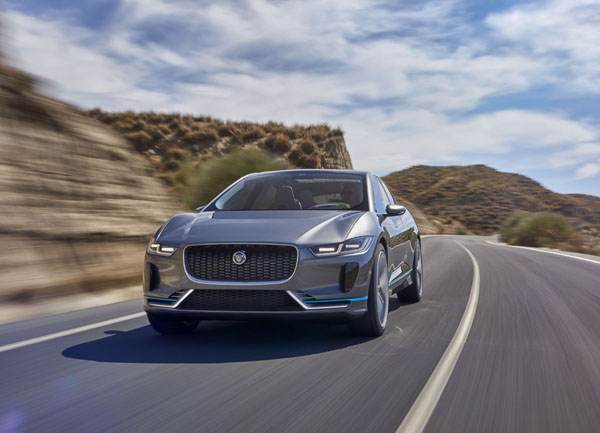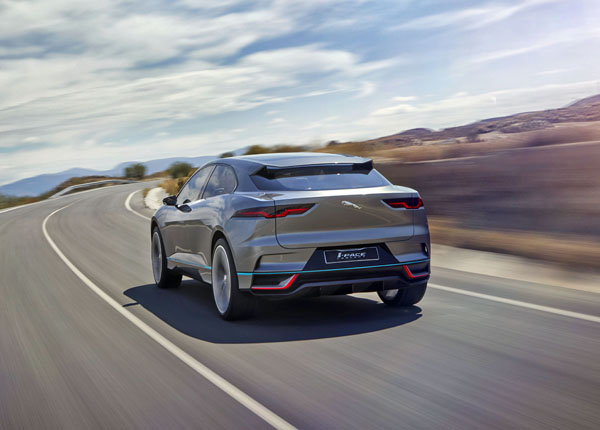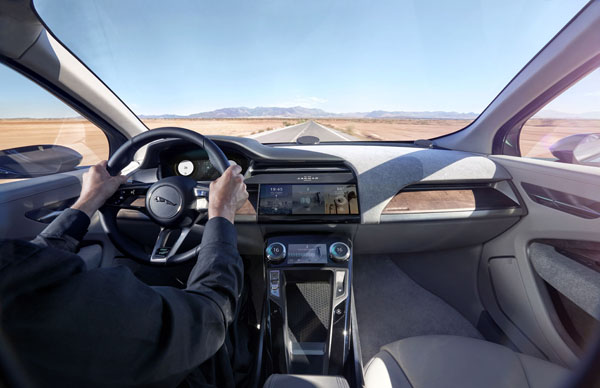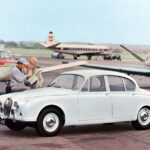 Jaguar has unveiled its first ever electric car at the Los Angeles Motor Show. California is exactly the right place to display the Jaguar I-Pace Concept given that the State is arguably the home of the most technologically advanced companies on Earth. Tesla is based there and is likely to be the company the Brits are aiming for.
Jaguar has unveiled its first ever electric car at the Los Angeles Motor Show. California is exactly the right place to display the Jaguar I-Pace Concept given that the State is arguably the home of the most technologically advanced companies on Earth. Tesla is based there and is likely to be the company the Brits are aiming for.
The Jaguar I-Pace Concept is a high-performance SUV with a stunning shape that’s more sportscar than family friendly wagon.
Electric motors at the front and rear axles generate a combined power output of 294 kW (400 horsepower). The instant torque that we all love in electric cars comes in at just above zero revs. In the electrifying Jaguar it’s listed at a delicious 700 Nm. All-wheel drive is obviously part of the package.
The sleek body, designed by the legendary Jaguar design chief Ian Callum, isn’t just for show, optimised aerodynamics mean it has a drag coefficient of just 0.29. Exceptional for an SUV.
A low bonnet is flanked by curving wheel arches outside a broad, very-Jaguar grille with a hexagonal grid in gloss black. The long wheelbase and short overhangs enable a coupe-like roofline. The hot Jag Concept sits on 23-inch Nighthawk wheels in Technical Grey with Gloss Black inserts.
Electric vehicle powertrains are much more space efficient than those with internal combustion engines and complex transmissions. There’s no engine bay and the battery pack sits flat under the floor and between the axles. The Jaguar’s footprint of 4680 mm x 1890 mm and a long wheelbase of 2990 mm means the I-Pace Concept occupies less road space than conventional mid-size SUVs, yet has more interior room than SUVs in the segment above.
The I-Pace has a predicted range of more than 500 kilometres when measured on the NEDC cycle.
The low centre of gravity combined with sophisticated double wishbone front and Jaguar’s Integral Link rear suspension is promised to give excellent handling and ride. Refinement is so much easier to achieve in electric cars due to their near silence.
Cheekily Jaguar’s press information on the I-Pace Concept even mentions the most famous Jaguar of them all, saying, “The driver has an exceptional view of the road … a little like the Jaguar E-Type, the front wings beautifully frame the road ahead, enabling drivers to select the line through corners with confidence.” So there you are.
Energy storage in the I-Pace Concept is a liquid-cooled 90 kWh lithium-ion battery pack, designed and developed in-house. The battery’s housing is lightweight aluminium and forms an integral part of the I-PACE Concept’s body structure.The battery uses pouch cells selected for their energy density and superior thermal performance due to lower internal resistance. It’s liquid-cooled using a dedicated two-mode cooling circuit.
In moderate ambient temperatures the battery improves efficiency by relying only on a radiator to remove the heat generated by the cells. At higher temperatures a chiller linked to the vehicle’s main air conditioning system provides greater cooling capacity to keep the battery in optimum condition.
Some 80 per cent of battery charge is achieved in 90 minutes and 100 per cent in just over two hours using 50 kW DC charging.
The I-Pace Concept also introduces Jaguar’s new, intuitive ‘flightdeck’ approach for the controls interface. Information is provided through a 12-inch TFT touchscreen. A separate, 5.5-inch secondary touchscreen is paired with two aluminium rotaries that encase HD circular displays. This allows occupants to configure infotainment and climate whilst keeping full screen information on the 12-inch display above.
The I-PACE Concept also features a configurable 12-inch HD virtual instrument cluster and a full-colour head-up display.
All of which add up to grace, space and pace in the electrifying new Jaguar I-Pace. We can’t wait to drive it, though that may not be till late 2017, or more likely the first few months of 2018.











